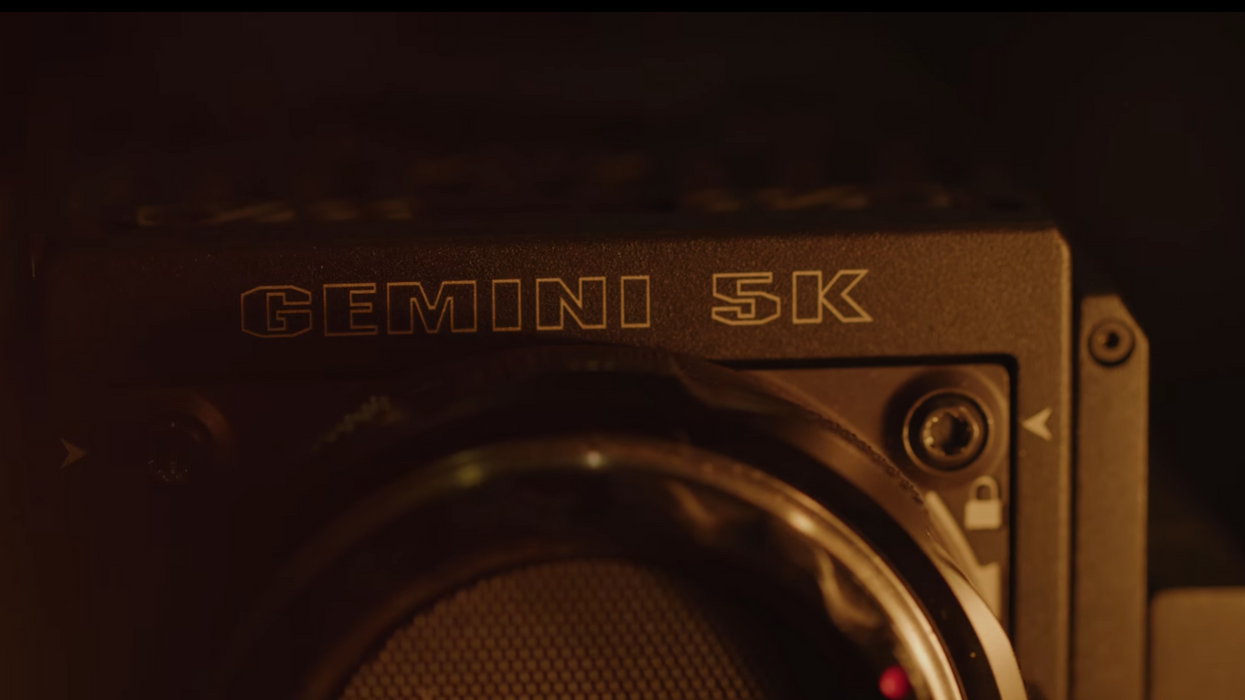RED Announces a Less Expensive Gemini Sensor for Your Production Needs
Is this the sensor you've been looking for?

When RED originally released the low light Gemini platform, it was targeted as an outer space device for an unnamed "space client" that could really only be one of two billionaires. The initial run of a mere five units sold out before the platform was even publicly promoted, leaving us without billions of private or government finances available for a low light, raw beast.
Good news is now upon us. RED has just announced that the company will be launching Gemini for production, which should be exciting news for anyone interested in low light work.
The new sensor offers two-stops more sensitivity than the Helium, putting it at about a native ISO of 3200. While that might not seem impressive if you're coming off shooting ISO 25,6000 on an A7SII, the Gemini will be delivering clean, 5K raw at 3200 ISO. That's a huge upgrade and will be significantly less noisy than many other cameras' high ISO settings.
It's better to think of this as comparable to the Varicam, which offers clean, exceptionally useable footage at ISO 5000—though we'll need to test it to find if its sensitivity will make Schott noise an issue.

Rather than release the exact same platform they sent up into space, RED has improved it in a few key ways. First off, the company has built the camera to be dual ISO (similar to the Varicam and EVA1), meaning that when you switch between 3200 mode and 800 mode, you're not just changing metadata; the camera is physically changing image processing for better low-light resolution. Best of all, this switch can be done without a long reboot.
Since anamorphic glass tends to be slower, having a faster sensor combined with anamorphic glass can lead to a dynamic combination.
In addition, an extra 300 pixels of vertical resolution has been added to make this a better camera for anamorphic shooters who want the full height of a Super35mm sensor. Since anamorphic glass tends to be slower (and you may want to shoot it a little stopped in when possible), having a faster sensor combined with anamorphic glass can lead to a dynamic combination. The test image above was captured with the Atlas anamorphics, which we're particularly excited to see rolling out later this year.
Will we be getting a Panavision DXL version of the Gemini? Let's hope so. In the meantime, Gemini is available for $24,500, and you can check out Red.com for more.
Tech Specs:
- 30.72mm x 18mm sensor size
- 96fps at 5K max
- 5120x3000
- 2 stops faster than Helium
- 6 produced
- $20,000
- Seamless switching between Standard and Low Light modes ( no reboot needed )
- 5K up to 96 fps Full Format
- 4K up to 30fps and 2K up to 120fps using ProRes or Avid DNx
- Simultaneously record REDCODE plus ProRes or Avid DNx Up to 275 MB/s write speeds
- Interchangeable lens mount
















